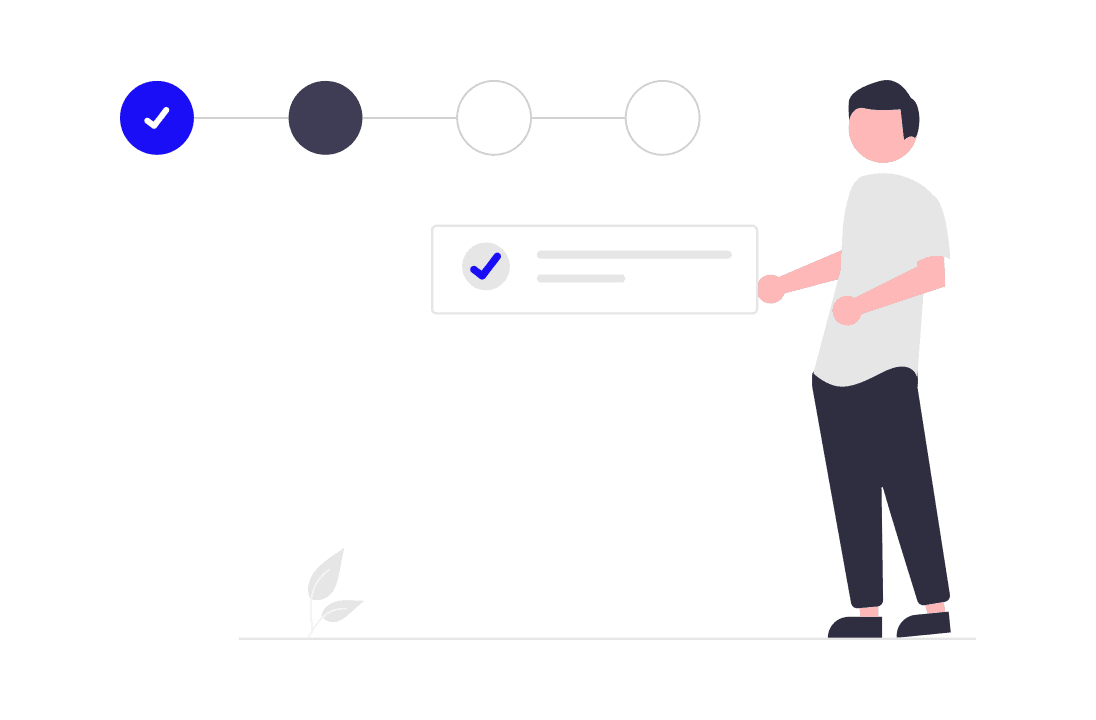What a customer wants and what you offer may not always be the same. And this moves you two away, making communication more and more difficult. How can you get to the customers and find out what they expect? The selection of the right communication channel and form is crucial here.
What about opt-in forms. They could be very effective if they are designed wisely. In practice, what does it mean? First, you should think about such a form’s content, then what do you want to achieve and which format would be best. Below you can find a checklist that will be helpful while creating your effective opt-in forms.
Just to keep things in order, let’s start with the simple description of the opt-in form.
What is an opt-in form?
By opting-in, web users acknowledge interest in a product or service and authorise a third party to contact them with additional information. In other words, their consent is given so that you can contact them.
Such forms are mostly used in the e-mail communication. Many e-commerce stores send them as permission to provide newsletters or other marketing materials to users.
But opt-in forms can be presented in many ways, besides e-mails. Very popular are pop-ups forms, built-in widgets, and dedicated blog posts or landing pages.
How to make it effective – the checklist
Ask yourself a few questions about the content
In order to make a successful opt-in form, you should first think about why do you want to use it. To resolve this riddle, below, you can find five follow-up questions. They will help you with defining your goals and planning the forms’ content.
- Who do you want to reach?
Before you say target audience, we will pre-empt you – be more specific. Target is a broad concept.
By precisely defining the recipients, you will be able to design compelling content marketing ideas. Think if you want to reach people who already know your brand or completely new recipients? Maybe you would like to remind clients that have not visited your store for a long time about your brand? It also a good idea to check who precisely clicks on your links and seems to be interested in your brand. You can do it with RocketLink; shorten your links, and follow its audience.
Moreover, selling a new batch of items at a lower price is not the same situation as starting a new drop. And the recipients would be different groups, too. Consider who would exactly be interested in such products. Describe the persona, and then it will be much easier for you to step into the recipient’s shoes and create an opt-in form that will actually work.
- What you want them to do?
In most cases, opt-in forms are created to get consent and acquire contact data. This is your primary goal while designing one, and you need to be focused on it. Remember that the client shouldn’t be distracted, so do not promote a new collection or inform about the big sale in such opt-in form. It is highly probable that when your client read about such actions, they will give up with filling your form and check new items or sale.
Be strict about content – one form, one information. Moreover, you need to be clear about what kind of information you want to gain and its purpose. Data privacy is essential nowadays, so people will not share information without knowing the exact purpose. To support these words, in 2019, there was a survey conducted in which 84% of respondents admitted that they care about data privacy, protecting others online and wish to have more control about using their data on the Internet.
- What do you have to offer?
That is a part of human nature that we like incentives. The client-company relationship is typically a business relationship, so it is rare for people to do a free service from both sides.
Decide how to reward people for successfully filling out your form before you launch it. It should give people the feeling that you give them more than you take.
The reward could be a discount (but a decent one, not 5%). The gift may also include an e-book or industry report. Also, an invitation to a webinar might be a good choice. Furthermore, if an opt-in form is related to the newsletter, make sure that it is interesting and worthwhile reading. Fill it to the brim with news or the latest updates from the industry. Its headline should be catchy and encouraging, too.
- What information do you need to ask?
In this case, less is more. Since we mentioned earlier, people are concerned about their data, so narrow down your requirements. Ask about e-mails address and maybe a name to personalise messages. Additionally, you can ask for the phone number to utilize for customer service via best software for call centers. That should be enough. First, you need to gain trust, then you can ask for more details.
You should not try to obtain very personal information at first. Do not ask about the place they live, their interests, preferences etc. Once you start building a bond with your customers, you can send them surveys asking about such things.
- How long should the form be?
Same rules as above – less is more. It means that copy should be as long as it is necessary. The too-long opt-in form won’t be encouraging; rarely anyone would want to read it, and as a consequence, few people fill it.
On the other hand, the opt-in form shouldn’t be too sketchy. The first thing you need to highlight is who you are (brand), what information you want, and why you want it. Besides, it ought to be clear what kind of reward one will receive for filling out the form.
And remember to assure people that you respect their privacy and link to your web’s privacy policy.
Choose the best form
Yes, content is the king, but the form matters too. You can provide the most encouraging and thoughtful content, but it won’t bring much if you serve it wrong. What are the options, and how to choose the best one? Some tips are presented below.
- Pop-up opt-in form
It is one of the most popular forms, and it can bring satisfying results. An average conversion rate for pop-ups is 3.1%, and the best-performing ones reach 9.3%.
However, there is a case with pop-ups. They can be annoying. Your customers will likely become angry and exit your web if these appear on every page. Remember that too high a frequency of such forms is probably not a good idea.
If you want to make the most of the pop-up, you should focus on CTAs. They need to be catchy and interesting, maybe a little funny. Also, focus on the colours. They need to be in harmony with your sustainable web design; it all should be a coherent whole.
Pop-up opt-in forms are a good solution for businesses that are willing to acquire new customers and expand their brand awareness. If a user visits your website for the first time, they might be inclined to take advantage of a discount code given in exchange for filling out the form. But do not attack such a client with this from the very beginning. If they don’t know what the web offers, what the prices are, and so on, they won’t leave their data. So give them some time and show an opt-in form, e.g. after adding some items to their chart.
- Landing page opt-in form
In this case, you give the ability to sign in from the very start. This way is more subtle than a pop-up. You can place a banner with opt-in at the very end of your side or above your menu. It depends on you.
The opt-in forms for landing pages need to be as short and to the point as possible. A place to write an e-mail address and reward – that’s it. There is no room for long descriptions.
Such forms are a good way to increase brand awareness, invite new customers to join the brand family, and remind your regular visitors that it is worth leaving some contact data. To create such forms without the need to code, you can leverage online form creation software solutions. Many of these solutions also let you create other types of forms like pop-up forms and opt-in pages.
- Opt-in page
The opt-in page can use a pop-up or banner as an invitation to click and go to the separate tab with an opt-in form. In this case, the form is not a small piece with two lines of text. Here, it is a separate page introducing your brand, what kind of products/service you offer, why you ask about such information, what the rewards are, etc. The website may also provide links to a knowledge base, an offer, pricing, etc. You can invite the recipient to visit your social media, too. And, of course, link to the privacy policy.
The opt-in page gives you some room for the broader presentation of your brand and offer. Businesses that are looking for new customers, making a buzz about a new product release, or inviting people to join a competition, will find this one useful. It gives a space to describe such temporary actions like a contest, inviting people to join and acquiring their data for a longer time.
- E-mail opt-in form
When it comes to e-mail, you need to be careful because SPAM messages are a real problem nowadays, and e-mail providers are cautious about it. Nearly 85% of e-mails are spam, so the struggle is real.
How to design the e-mail opt-in form that would bring results? Most brands send it as a banner, and when recipients click on it, they are taken to a separate page and there, they can fill out the form.
An e-mail opt-in form should consist of a catchy title, aesthetic graphic in good resolution, and a button to make them sure where to click. It should also be clear that after collecting the data, the process ends successfully, and the reward is on its way. Add a message informing that the discount code would be sent in minutes or that the e-book is waiting in the inbox to be downloaded.
Moreover, every e-mail of this type should offer the ability to unsubscribe. A person cannot be forced to receive e-mails from you. It should be clear how to disappear from your marketing list.
Over to you
Opt-in forms can be a massive dose of help in data acquisition or expanding your brand awareness. It doesn’t matter if you’re trying to gain new customers or remind people about your brand; opt-in forms are perfect for both.
Before you create your own, check the points above and make sure you cover all questions and choose the best form. In this way, your opt-in form has big chances to succeed, and thus you would be able to use your customers’ data to improve your marketing strategy and communication.



